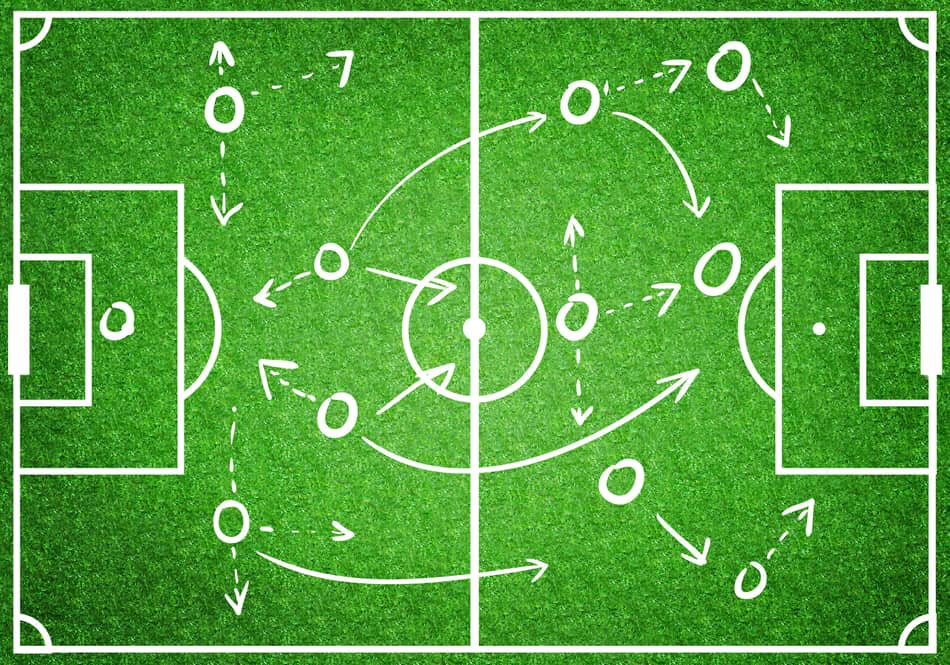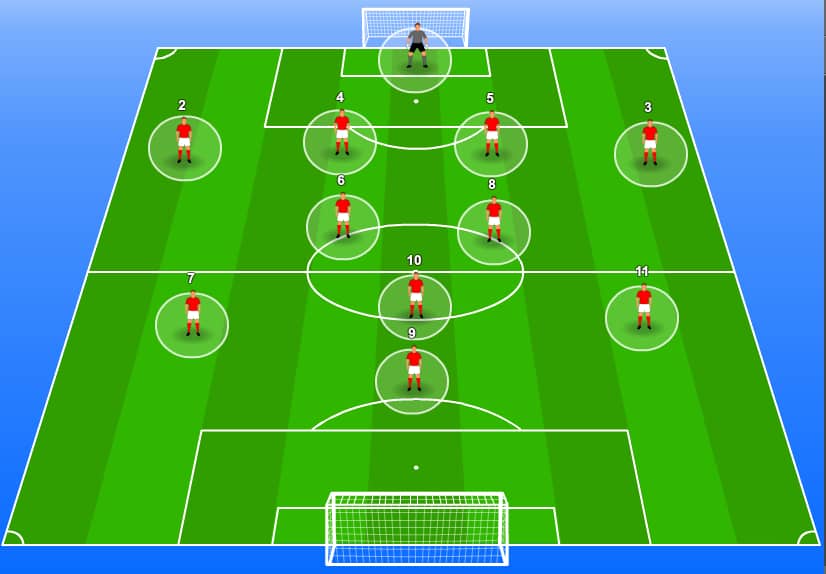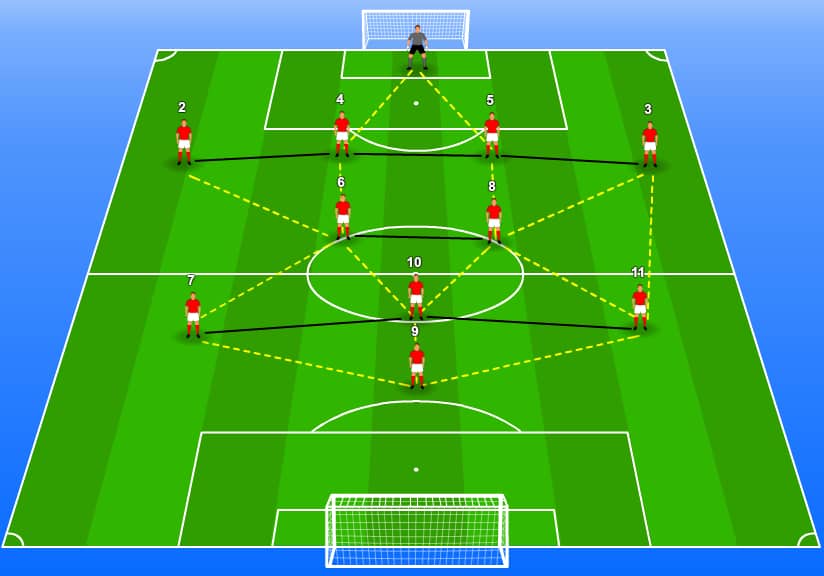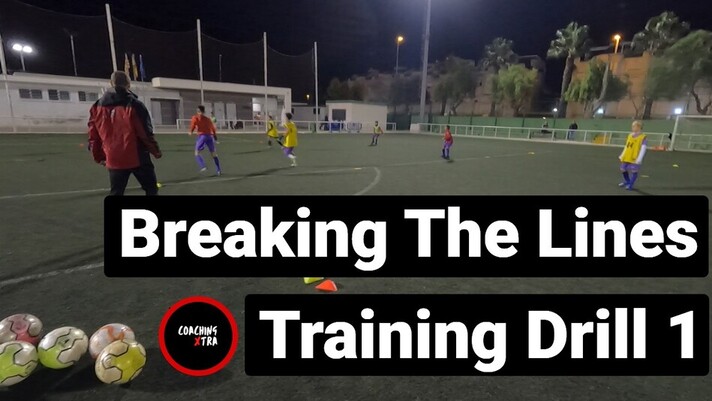Tactical periodisation in football is a method that really caught my eye when studying for the UEFA Pro licence in Spain. So I took it upon myself to study the method further after I completed the course and thought that there might be many aspiring coaches who would like more information on this training methodology.

Football tactical periodization structures training to ensure that all of the game’s elements, physical, technical and psychological are all trained at the same time, along with the core component that is at the heart of a session, tactics! None of the elements are trained in isolation.
There are several facets to tactical periodisation that need to be understood before using this training methodology. These factors include:
- What is football complexity?
- The tactical periodisation method and principle
- What are the team training scales in tactical periodisation?
- Tactical periodisation weekly training plan
What is football complexity?
When you examine a football match, it consists of the following: 2 teams of 11 players, both fighting for possession of one ball and with the intention of trying to score more goals than the rival team, within the parameters of the laws of the game.
In addition it is the job of the referee to be the mediator of the laws of the game with many of his/her decisions being from a subjective viewpoint.
All of this, whilst being played outdoors where the weather may also have an impact on the match, means that there are a significant number of factors that influence the game but are out of the control of the coach and team.
This is what makes the game unpredictable and complex. Since tactical periodisation considers all of these aspects, it attempts to prepare the team and individual players to make good decisions depending on the multiple situations that might arise throughout a game due to its complex nature.
The tactical periodisation method and principle
The method of tactical periodisation is to break down the whole, and divide it into parts in order to make those parts less complicated, and therefore easier for the players to understand. This principle is known as fractality.
There are four levels to fractal organisation
- Game model
- Game phase
- Specificity
- Practices
Game Model
The game model is concerned with the team’s specific style of play or what can be known as its principles. These principles can be broken down into:
- Main principles (Involves the collective and intersectorial)
- Sub-principles
- Sub-sub principles
These principles are trained on specific days and focus on certain scales of the team. These scales (which will be explored later) are collective, group, sectoral, intersectoral and individual.
Game Phase
This level relates to dividing the game into its four distinct phases of play.
- Attacking
- Defending
- Transition from attacking – defending
- Transition from Defending – attacking
(Set plays could be added as the fifth phase of play)
Even though football is a dynamic and interchanging game, we can dissect each phase to help the players perform the actions that the game model implies.
Specificity
Specificity is what connects the training and game model. It means that everything a team does in training should be linked with both the game and game model. For this reason, training should be organised in a way that implements all four moments of the game, at a similar game intensity.
Practices
The final level is founded on the previous three, game phase, game model and specificity. The practices should help the players mimic specific actions and behaviors that typify the game model with the coach ready to mediate the specific actions required.
What are the team training scales?
Scales of the team are an important factor when organizing training in accordance with the game model, as it allows the coach to recognise which players the principles of the game model affect.
The scales are as follows:
Individual
This is simply considering the individual players

Collective
Includes the whole team or each line (attacking, midfield and defensive line)
Sectoral
Covers only one line of the team
Group
Comprises of a small number of players that may not be of the same line but are in close proximity (full-back and wide midfielder)
Intersectoral
This concerns two lines of the team (defensive and midfield line)

Weekly training pattern
When organizing the training for the week it is important to take into consideration not only physical fatigue but also mental fatigue (as seen in the picture below).
As for applying this into the days of the week, a normal week should look something like this…
Monday – Day off (rest after a game day)
Despite the fact that from a physiological perspective it may be better to perform an active recovery session, since the players will only get one day off in the week, having Monday off will be psychologically better off to eliminate mental fatigue
Tuesday – Active recovery (working on sub-principles)
Active recovery day means that the work done is very light, both physically and mentally as they are still recovering from the game and the aim is for the players to be ready for Wednesday’s session.
However, this does not mean that the team cannot work on tactical-technical aspects. A tactical exercise can be organized in a way that the players who played the majority of the game are not working too hard but are still learning components of the game model. Those players who did not play a significant amount of minutes can be put in a position where their workload is of a greater intensity by being on the defending team, for example.
Wednesday – Strength (working on sub-principles & sub-sub principles)
Wednesday is the first day of what is known as the acquisition stage, in relation to the instruction of the game model and the physical impetus.
Since the physical aspect of the session is strength we reduce the space playing areas and keep the duration of the exercises short with high rest periods between both repetitions and sets. The complexity is scaled down and we play in 1v1 to 5v5 situations, up to 3 minutes time periods.
Since the style of play is reduced into small parts, it means that the mental demands are not as great as a competitive game.
Thursday – Endurance (working on main principles & sub-principles)
This is a day when we work as a collective group, in a fully competitive environment of 7v7 to 11v11, in large areas of the pitch. By working as a collective group we will be able to promote group coordination movements. This session will require longer repetitions with short recovery periods
Friday – Speed (working on sub and sub-sub principles)
On Friday the emphasis is on speed. We will work in reduced spaces to promote speed of thought, reaction as well as movement. Exercise duration should be kept short so that we do not overwork the players two days before the game.
Saturday – Activation (working on sub-principles)
The day before the match, we just want to re-cap the objectives of the week and the sub-principles with unopposed practices as a collective group. It is important to stay away from exercises that will fatigue the players mentally and physically.
Sunday – Match day
With this brief explanation of tactical periodisation, in the remainder of this blog I will share with you a bit more knowledge in relation to this training methodology such as:
- The history of tactical periodisation
- Which elite coaches use tactical periodisation?
- What is the ideology of tactical periodisation?
The history of tactical periodisation
“Periodização Táctica” or tactical periodisation was created by Vitor Frade who has been teaching this training method at the university of Porto for decades.
The methodology of tactical periodization stems from the combination of many different scientific fields:
- Neuroscience
- Sociology
- Systems theory
- Psychology
- Fractal Geometry
- Physiology
- Chaos theory
- Theory of complexity
All of the above are used and applied to the game to examine football from a more holistic point of view.
Which elite coaches use tactical periodisation?
This training methodology has become popular amongst many elite football (soccer) coaches such as Nuno Espirito Santo, Andreas villas Boas, Brendon Rodgers and of course, most famously, Jose Mourinho.
What is the ideology of tactical periodisation?
The ideology behind this framework is to encourage players to make decisions that are in line with the coach’s game model so that the level of performances are more consistent throughout the whole season. This means that the game model guides the whole process.
I hope this blog was helpful and helped your understanding of tactical periodisation.



